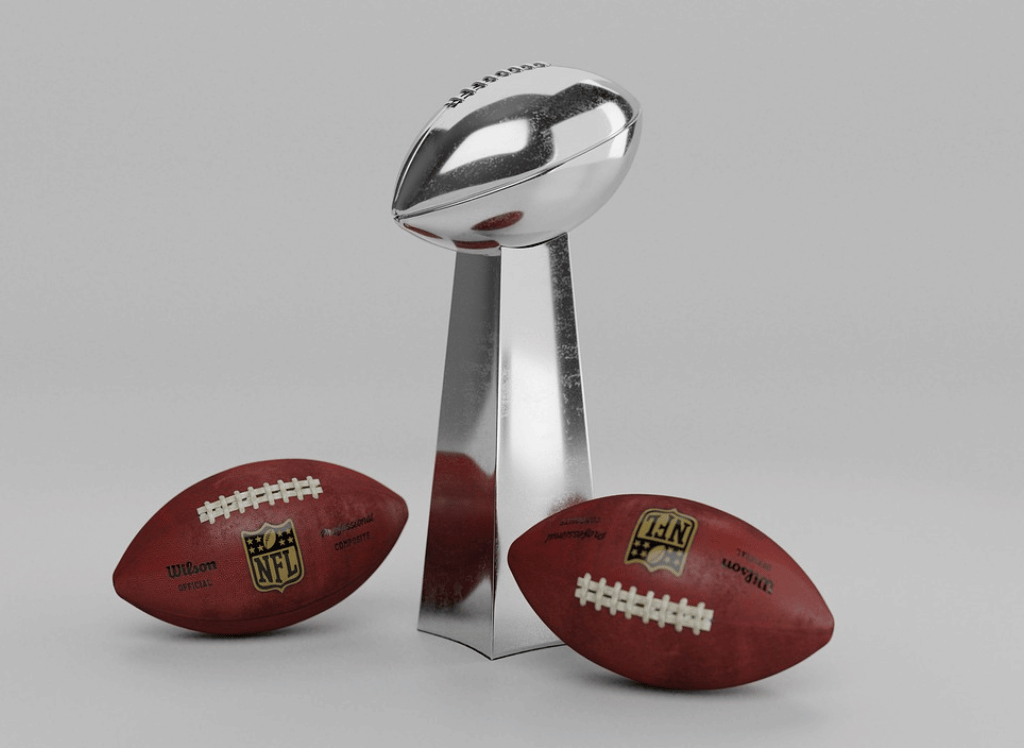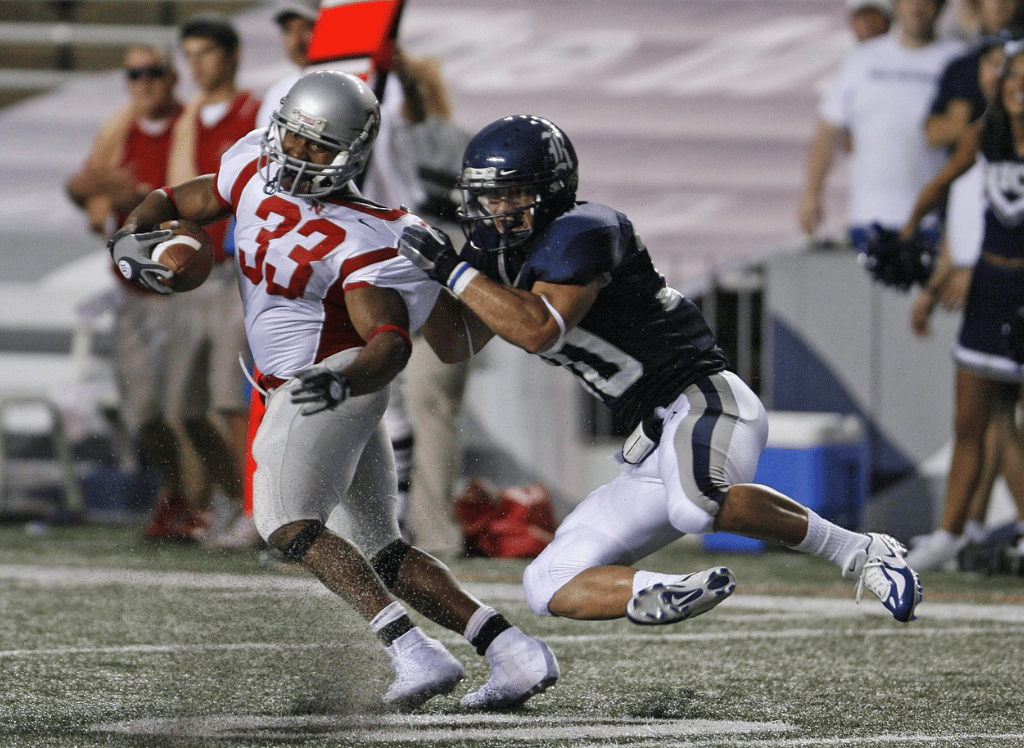In the stadiums of football, where gladiators clash and strategies unfold like a chess game on steroids, the Point After Touchdown (PAT) stands as a quirky yet crucial element. It's the cherry on top of the touchdown sundae, the encore after the main act. But what exactly is this point after touchdown, and why does it matter so much?
The Basics of the Point After Touchdown
When a team scores a touchdown, earning six points, the celebration isn't quite over. The scoring team gets a shot at points after touchdown, a chance to add more points to their tally. The PAT can be executed in one of 2 ways:
- one-point kick attempt
- two-point conversion
The one-point kick is a straightforward affair, akin to a field goal, where the ball is placed on the opponent's 15-yard line, and the kicker attempts to send it through the uprights.
On the other hand, the two-point conversion is a bit like trying to thread a needle while riding a unicycle. The offensive team lines up at the opponent's 2-yard line and attempts to carry or pass the ball into the end zone. If successful, they earn two points. This option is often chosen when the team needs more points to catch up or secure a lead, adding a layer of strategy to the game.
One-Point Kick Attempt
The one-point kick attempt is the bread and butter of PATs.
If the ball sails between the uprights, the team earns 1 extra point after the 6-point Touchdown. This method is favored for its simplicity and high success rate, making it the go-to choice for most teams. The kicker, often the unsung hero, steps up with nerves of steel, aiming to send the ball soaring through the hash marks.
However, even the most straightforward tasks can go awry. A botched snap, a loose ball, or a gust of wind can turn a routine kick into a comedy of errors. In NFL games, where every point counts, these mishaps can be the difference between victory and defeat. The one-point kick attempt may seem like a walk in the park, but in the high-stakes world of football, it's anything but.
The Kicker in PATs
In the world of PATs, the kicker is both a hero and a scapegoat. Tasked with the responsibility of executing the one-point kick attempt, the kicker's performance can make or break a game. A successful kick is met with cheers and high-fives, while a missed attempt can lead to groans and facepalms. It's a pressure cooker situation, where the kicker's nerves are tested to the limit.
Kickers are often seen practicing their craft on the sidelines, honing their skills for that crucial moment. They must contend with the elements, the opposing team's attempts to block the kick, and the weight of expectation from their teammates and fans. In the high-octane world of American football, the kicker's role in PATs is a blend of precision, focus, and a dash of luck.
Two-Point Conversion
For those who like to live on the edge, the two-point conversion is the ultimate gamble.
This play is a test of strategy, skill, and sometimes sheer luck. It's a high-risk, high-reward play that can turn the tide of a football game.
The two-point conversion is often employed when a team is trailing and needs to close the gap quickly. It's a bold move that can pay off handsomely or backfire spectacularly. The opposing team, aware of the stakes, will pull out all the stops to thwart the attempt. It's a thrilling spectacle, where the offensive player becomes the ball carrier, dodging defenders like a matador in a bullring.
PATs on NFL Games
In NFL games, where the stakes are sky-high, the point after touchdown can be a game-changer. A successful PAT can extend a lead, while a failed attempt can leave the door open for the opposing team. Coaches must weigh their options carefully, deciding whether to go for the safe one-point kick or the riskier two-point conversion.
The strategic implications of PATs add an extra layer of intrigue to the game. Teams must consider the score, the time remaining, and their own strengths and weaknesses. It's a chess match on the gridiron, where every move counts. The PAT may seem like a small detail, but in the grand scheme of a football game, it can be the difference between triumph and heartbreak.
Point After Touchdown FAQ
What is the difference between a one-point kick attempt and a two-point conversion?
A one-point kick attempt involves kicking the ball through the uprights from the opponent's 15-yard line for one extra point. A two-point try requires the offensive team to carry or pass the ball into the end zone from the two-yard line for two extra points.
Why do teams choose a two-point conversion over a one-point kick?
Teams opt for a two-point conversion when they need to catch up or secure a lead. It's a strategic decision based on the game's context, offering a higher reward but with greater risk.
How does a failed PAT impact a football game?
A failed PAT can leave a team vulnerable, as it misses the opportunity to extend its lead. This can shift momentum to the opposing team, making the game's outcome more uncertain.
How much is a touchdown?
A touchdown is worth six points in American football. After scoring a touchdown, the team can attempt either a one-point kick or a two-point try for additional points. A successful one-point kick adds one point, while a successful two-point conversion adds two points to the team's score.
Summary
The point after touchdown is a fascinating aspect of American football, blending strategy, skill, and a touch of drama. Whether it's the straightforward one-point kick attempt or the daring two-point conversion, the PAT adds depth and excitement to the game. In the high-stakes world of NFL games, where every point matters, the PAT is a crucial element that can influence the outcome and keep fans on the edge of their seats.









